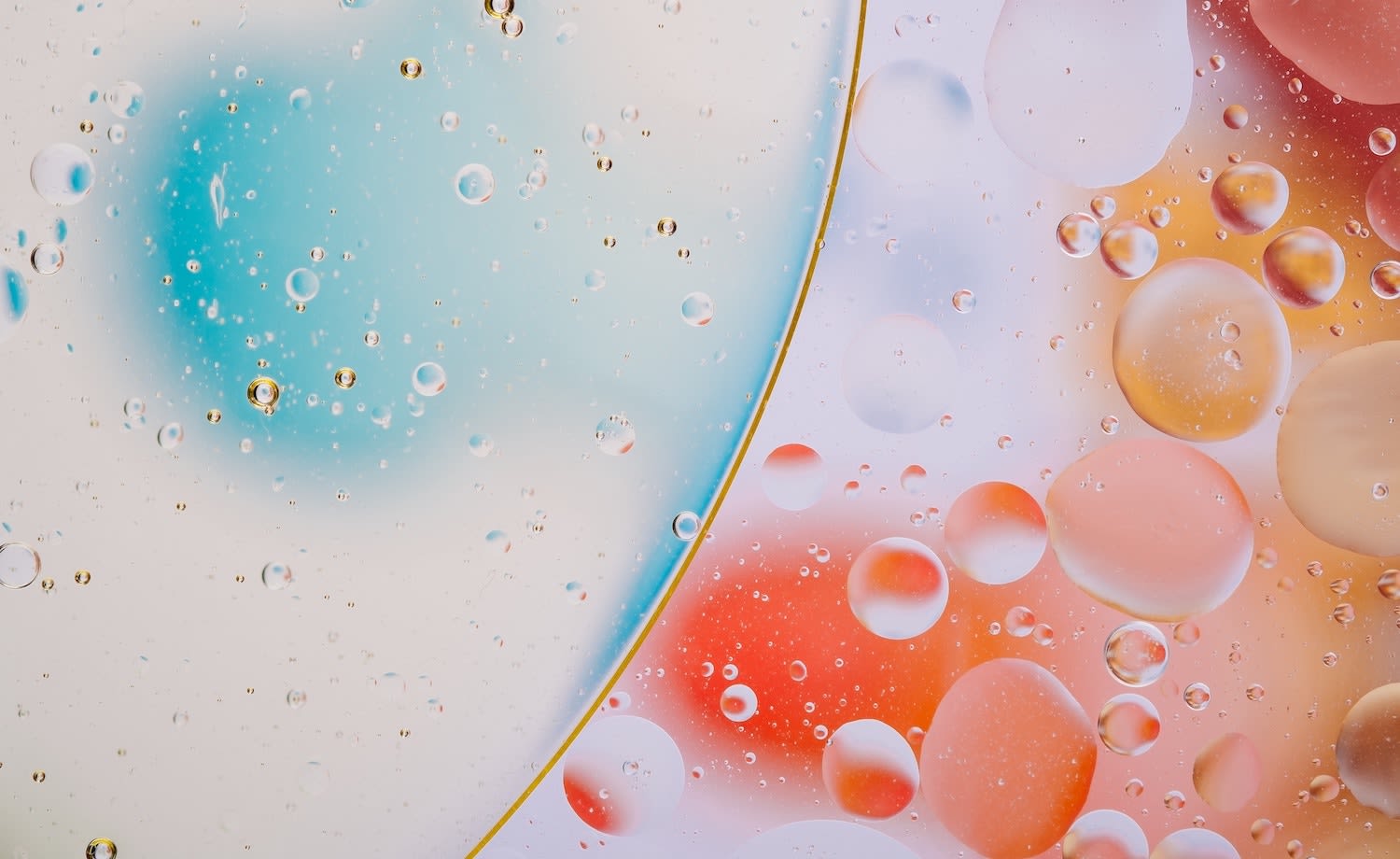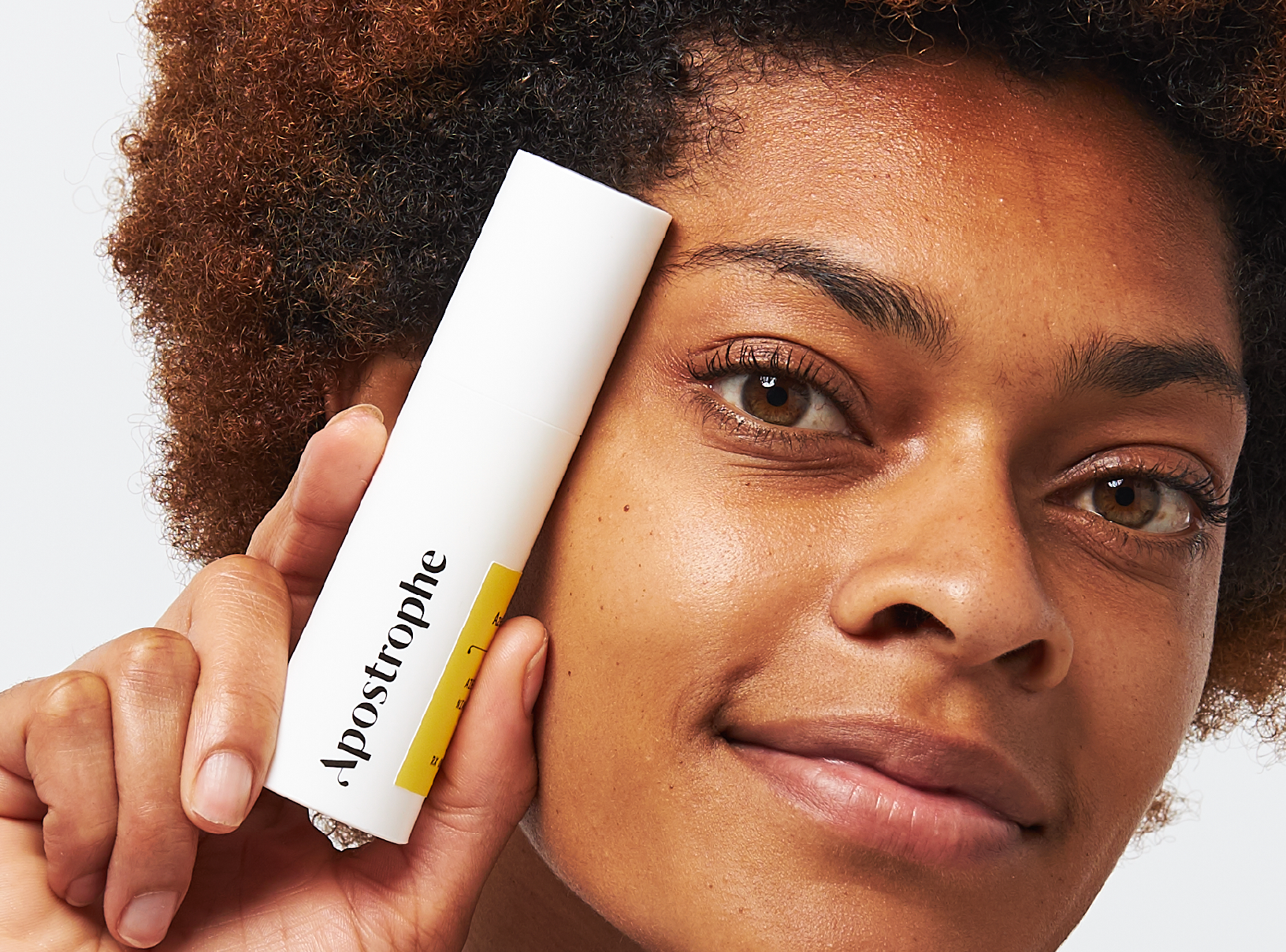Education
What is hyaluronic acid good for?


SHARE
Education
What is hyaluronic acid good for?
Medically reviewed by Vicky Davis, FNP
Written by Apostrophe Team
Last updated 4/1/2024
Aging is an eternal problem, and it feels like humans have been searching for a solution for just that long. From fountains of you to cloning, the worlds of fantasy and science fiction are full of mystical tools for undoing the ravages of time. And back here in reality, it can feel like the beauty industry is full of them too.
One such miracle cure you may have heard of is a naturally occurring compound called hyaluronic acid. Hyaluronic acid is present in your bodies, and the bodies of plenty of other living organisms on our planet. It’s not as common as, say, water, but its sole purpose is to help us retain, well, water.
Because of its incredible ability to do just that, it’s been touted as a secret ingredient to the fight against everything from acne to aging. But those claims, while based in fact, are often a little more fiction than fact.
If you’ve come here looking for a real look at hyaluronic acid and what it can do for you, we’re not going to disappoint.
We’ve written about hyaluronic acid in the past, and for a complete guide, you can read further here. But for now, let’s examine what hyaluronic acid actually does for your skin.
What Hyaluronic Acid Is
Put simply, hyaluronic acid provides general benefits to your skin’s moisture retention. Those benefits can help in a variety of causes, from dealing with acne and aging to fixing dull skin.
More specifically, hyaluronic acid is “a substance that retains moisture ... capable of binding over one thousand times its weight in water.” According to Harvard Medical School, hyaluronic acid is naturally found in the skin, eyes, and joints. In the world of beauty products, though, it’s generally made by laboratory bacteria.
1,000 times its weight in water sounds great, but it’s important to clarify that while better moisture retention is an important element of the fight against these skin conditions, it’s not a cure in and of itself.
Hyaluronic acid won’t cure acne, it won’t make wrinkles go away, and it won’t suddenly make your skin look dewy and glowy. Instead, it works to set your skin up to build those benefits for itself, through its own processes.
The Role of Moisture in Acne, Dull Skin and Wrinkles
Those processes we mentioned? They are the key to your skin’s healthy function. And they need water.
Moisture is an important element of skin health, and retention of moisture is important in preventing many of the conditions we worry about at all ages.
Acne, for instance, can be partly caused by dry skin. When cells are too dry to safely exit the hair follicle, it can cause increased production of sebum and other conditions that lead to imbalances in the follicle that cause acne.
The causes of dull, dry skin may be fairly obviously related to moisture, but wrinkles can also be caused by dehydration on and below the surface of your skin As you age, your cells experience decreased function, and they’re less effective at replacing themselves — particularly if they don’t have the elements they need available to function. And things like free radicals can further sap your skin of necessary compounds.
Where hyaluronic acid fits into the equation is storage: it basically operates as a moisture vending machine for everything your skin needs moisture to do. That’s a problem because, as you age, the production of hyaluronic acid decreases, and your skin loses volume, plumpness, hydration—whatever you want to call it.
Treating these issues requires moisturizing, and while you can use products like aloe vera to increase moisture, hyaluronic acid products are more scientifically proven.
Hyaluronic acid results are impressive in studies.
A 2011 study found significant improvements to skin hydration and elasticity in women between 30 and 60 years of age from the use of a 0.1% hyaluronic acid topical cream.
A small 2014 study of 33 women aged around 45 years showed reduction in wrinkle depth and improved skin hydration from a topical “nano-hyaluronic acid” after as little as two weeks.
A 2017 study even found limited efficacy for oral hyaluronic acid as a wrinkle “inhibitor.”
The Limits of Hyaluronic Acid
Hyaluronic acid, at the end of the day, isn’t really a miracle cure, so much as one of many available tools that might improve your results. And it’s important to distinguish which type of hyaluronic acid you’re using: injectable or topical.
According to Harvard Medical School, topical hyaluronic acid “will never be as effective as an injectable HA filler for replacing lost volume, even though some topical HA products are misleadingly marketed as topical “fillers.” Topical HA is an excellent moisturizer. However, if the goal is to improve volume loss and laxity of the skin that naturally occurs with aging, injectable HA, rather than topical HA, is the preferred treatment method.”
In other words, topical hyaluronic acid just isn’t some miracle salve that’s going to instantly plump up your skin—the only thing that will do that probably is an allergic reaction (and you don’t want one of those).
But the Harvard folks also emphasized that while the results might not be life changing, the side effects are rare; hyaluronic acid is considered safe, generally well tolerated, and can be used during pregnancy and while breastfeeding. They concluded that for people craving “a more dewy, moisturized feel to their skin…. A serum or moisturizer containing hyaluronic acid can be a great choice [for the] surface level.”
Fillers, meanwhile, offer more impactful (if impermanent) results. Harvard confirmed they can be used “to address a multitude of cosmetic concerns, including lifting the cheeks, softening deeper folds and creases around the mouth and chin, improving the look of sunken, dark, under eye circles, hydrating and enhancing the lips, and rejuvenating the hands and earlobes.”
It’s important to understand, however, that these treatments will become a lifelong obligation for the results to continue; you’ll need to return for additional fillers every three to six months.
When to Consider Hyaluronic Acid
If you’re seeing dullness, wrinkles, or having issues with acne from dry skin, products with hyaluronic acid might be part of a skincare routine that helps you take back control of your skin. But before you dive into a pool of serums, it’s best to consult a healthcare professional for advice on treatments.
We say this a lot, but just because you’re seeing symptoms, doesn’t mean you have the condition you think you might from web research. And while resources like our blog can provide more information, they ultimately don't replace the professional opinions or diagnoses of dermatologists
Furthermore, your skin issues could very well be side effects of larger problems with diet and water intake, stress, or other issues that need to be addressed—those holistic issues may cause the problems you’re seeing, and addressing them may address the problems they’ve made.
References:
Kristina Liu, M. (2020, January 08). The hype on hyaluronic acid. Retrieved March 16, 2021, from https://www.health.harvard.edu/blog/the-hype-on-hyaluronic-acid-2020012318653. | Gold M. H. (2007). Use of hyaluronic acid fillers for the treatment of the aging face. Clinical interventions in aging, 2(3), 369–376. https://doi.org/10.2147/cia.s1244. Retrieved from https://www.ncbi.nlm.nih.gov/pmc/articles/PMC2685277/. |
Picardo, M., Ottaviani, M., Camera, E., & Mastrofrancesco, A. (2009). Sebaceous gland lipids. Dermato-endocrinology, 1(2), 68–71. https://doi.org/10.4161/derm.1.2.8472. Retrieved from https://www.ncbi.nlm.nih.gov/pmc/articles/PMC2835893/. |
Jegasothy, S. M., Zabolotniaia, V., & Bielfeldt, S. (2014). Efficacy of a New Topical Nano-hyaluronic Acid in Humans. The Journal of clinical and aesthetic dermatology, 7(3), 27–29. Retrieved from https://www.ncbi.nlm.nih.gov/pmc/articles/PMC3970829/. |
Zhang, S., & Duan, E. (2018). Fighting against Skin Aging: The Way from Bench to Bedside. Cell transplantation, 27(5), 729–738. https://doi.org/10.1177/0963689717725755 . Retrieved from https://www.ncbi.nlm.nih.gov/pmc/articles/PMC6047276/ |
Chen, Y., & Lyga, J. (2014). Brain-skin connection: stress, inflammation and skin aging. Inflammation & allergy drug targets, 13(3), 177–190. https://doi.org/10.2174/1871528113666140522104422. Retrieved from https://www.ncbi.nlm.nih.gov/pmc/articles/PMC4082169/ |
Puizina-Ivić N. (2008). Skin aging. Acta dermatovenerologica Alpina, Pannonica, et Adriatica, 17(2), 47–54. Retrieved from https://pubmed.ncbi.nlm.nih.gov/18709289/ |
Goa, K. L., & Benfield, P. (1994). Hyaluronic acid. A review of its pharmacology and use as a surgical aid in ophthalmology, and its therapeutic potential in joint disease and wound healing. Drugs, 47(3), 536–566. https://doi.org/10.2165/00003495-199447030-00009. Retrieved from https://pubmed.ncbi.nlm.nih.gov/7514978/. |
Jegasothy, S. M., Zabolotniaia, V., & Bielfeldt, S. (2014). Efficacy of a New Topical Nano-hyaluronic Acid in Humans. The Journal of clinical and aesthetic dermatology, 7(3), 27–29. Retrieved from https://pubmed.ncbi.nlm.nih.gov/24688623/. |
Oe, M., Sakai, S., Yoshida, H., Okado, N., Kaneda, H., Masuda, Y., & Urushibata, O. (2017). Oral hyaluronan relieves wrinkles: a double-blinded, placebo-controlled study over a 12-week period. Clinical, cosmetic and investigational dermatology, 10, 267–273. https://doi.org/10.2147/CCID.S141845. Retrieved from https://www.ncbi.nlm.nih.gov/pmc/articles/PMC5522662/. |
Pavicic T, Gauglitz GG, Lersch P, Schwach-Abdellaoui K, Malle B, Korting HC, Farwick M. Efficacy of cream-based novel formulations of hyaluronic acid of different molecular weights in anti-wrinkle treatment. J Drugs Dermatol. 2011 Sep;10(9):990-1000. PMID: 22052267. Retrieved from https://pubmed.ncbi.nlm.nih.gov/22052267/
Like what you just read? Sign up for our email list to get the scoop on skincare science delivered straight to your inbox.

Education
What is milia?
What is milia? Today, we’re jumping into one type of bump that you may have heard about most commonly in infants — milia.
Read More
Education
Best moisturizer for acne-prone skin
If you have combination acne-prone skin, figuring out which moisturizer is best for your skin might be tough. In this guide, we break down the best moisturizer for combination, acne-prone skin.
Read More
Education
How to build a face care routine
As you get into skincare, it might seem overwhelming, especially trying to figure out the order you're supposed to apply products in. Below, we detail how to build a face care routine for your skin!
Read More
